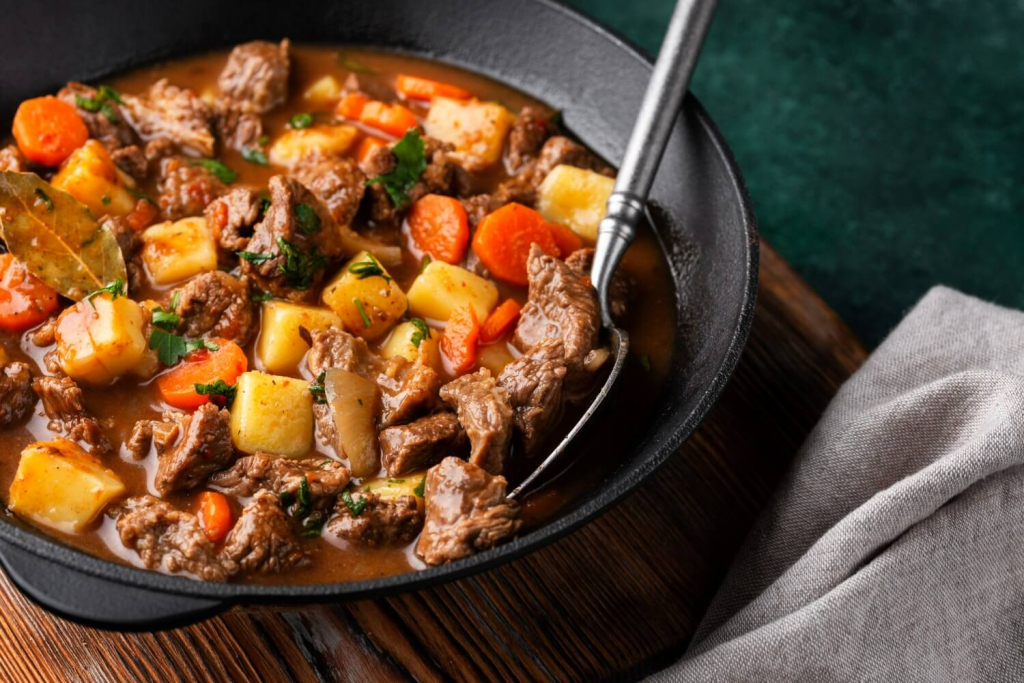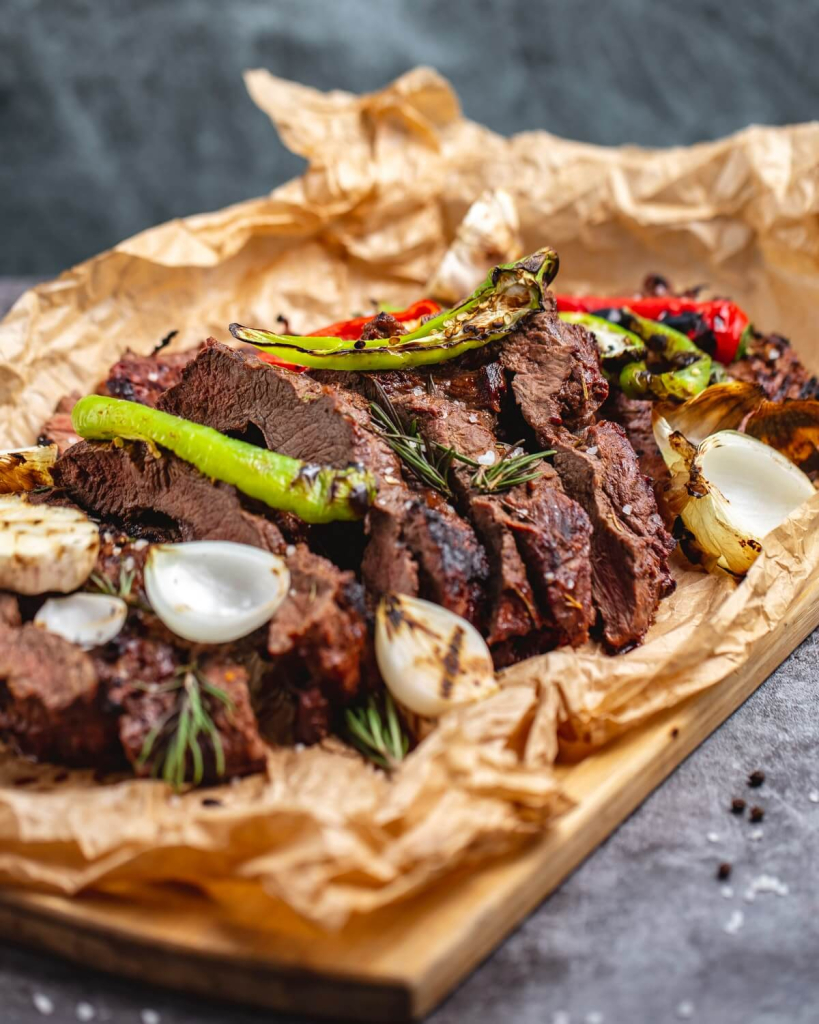
Image source: Freepik
Filipino Roast Beef Recipe and Its Place in Modern Filipino Kitchens
Many households across the Philippines have embraced dishes once considered too complicated for home kitchens. A Filipino roast beef recipe fits naturally into today’s dining tables because families enjoy hearty meals that balance comfort and depth of flavor. While it isn’t a traditional heritage dish eaten by past generations, it blends easily with the rhythm of Filipino cuisine, where savory sauces, slow cooking, and layered aromatics are already familiar patterns.
Why Roast Beef Became a Popular Home Beef Dish
For many families, preparing a beef dish like roast beef during gatherings is a way to serve something filling without spending all day over the stove. The process is straightforward once the steps are clear: prepare the meat, build flavor, and let heat do the rest. It’s also easier to adjust the recipe for intimate dinners or large groups, letting home cooks enjoy the same comforting results with minimal last-minute stress.
How Filipino Cuisine Adapts Global Techniques Into Filipino Style Comfort
The dish borrows from European and Spanish influences, yet adapts seamlessly to Filipino food preferences by adding soy sauce, bay leaves, and aromatics familiar to local palates. That flexibility allows cooks to create their own interpretation at home. Many also share their plates through Facebook, where a single photo or tag can spark interest from others looking for a doable approach to pot roast cooking.
Roast Beef Preparation Essentials for First-Time Home Cooks
The success of this dish lies in how you prepare the ingredients before any heat touches the pan. Choosing the right cut of beef with high grading or rating, assembling aromatics, and organizing your space make the entire workflow smoother.

How to Select the Right Beef Cut and Prepare the Marinade
A boneless round cut is common for home cooks because it stays firm but turns tender after cooking for hours. Before anything else, you marinate the beef in a simple mixture of soy sauce, garlic, pepper, and a splash of red wine. This marinade adds depth and helps soften the fibers even before you place it in the beef pot.
Setting Up the Beef Pot, Pan, and Ingredients for an Efficient Process
Many new Filipino households, especially those in newer communities like the latest development by Camella Homes, have kitchens designed with enough counter area for tasks such as seasoning, cutting vegetables, and working with large pot roasts. The ample workspace makes it easier to handle big cuts of beef, organize tools, and move freely during preparation without clutter.
Organizing your ingredients—onion, carrot, mushrooms, herbs, and broth—keeps the workflow steady once you start. Place your pan or pot on the stove and check that you have enough oil, broth, and butter on standby. These liquids and fats determine how well you’ll sear, season, and eventually simmer the meat.
Beef Pot Flavor Building Through Filipino Style Cooking
Once everything is prepped, the real work begins in the beef pot. This stage builds the familiar savory depth that defines a good roast.

Combining Soy Sauce, Beef Broth, Red Wine, and Aromatics in the Pot
Set the pot over medium-high heat and add a bit of oil. Place the meat inside once the surface is hot. You want a solid sear to seal the juices. After browning on all sides, pour in beef broth, soy sauce, and red wine, allowing the flavors to blend. Add chopped onion, smashed garlic, and chunks of carrot to boost the aroma.
Sear, Season, and Mix: The Heat Stages That Shape the Roast
As the mixture begins to boil, mix the aromatics gently around the meat. Season with salt, ground pepper, and peppercorn for a deeper bite. Once the surface bubbles actively, lower heat and let the meat simmer. These adjustments bring balance and help the sauce slowly thicken.
Vegetables, Bay Leaves, Peppercorns, and Mushrooms as Core Flavor Builders
Add bay leaves or add bay leaves as the broth settles. Include mushrooms for a richer body and a mild, earthy tone. The longer the ingredients sit together—sometimes several hours—the more cohesive the flavor becomes, turning the base into a semi-thick stew that will later transform into your gravy.
Roast Beef Oven Technique With Red Wine and a Preheated Oven
Once the stovetop stage has built enough flavor, the next shift happens in the oven.

How to Transfer the Meat to a Preheated Oven and When to Cover With Foil
Preheat your oven to the right temperature. Once ready, transfer the pot or roasting dish into the preheated oven. Depending on the cookware, you may need to cover the top with foil to maintain moisture. This method helps the meat stay tender while cooking at a steady pace.
When to Add Flour, Butter, and Broth to Build a Smooth Gravy
After the meat has cooked long enough, remove beef from the pot and let it rest on a plate. With the pot still hot, add flour or simple flour mixed with butter to the drippings. Let it cook briefly, then pour in more broth or half broth and red wine to make a smooth sauce. This step creates the base of your homemade gravy, capturing all the cooked-in flavors.
Serving Filipino-Style Roast Beef at Home
This is the part where all the planning pays off.
Slices, Garnish, and Arranging on the Serving Plate
Cut the roast into uniform slices and lay them neatly on a serving plate. Spoon the gravy over the top and add a light garnish of parsley for a clean finish.

Pairings With Mashed Potato, Rice, and Vegetables
You can serve the dish with creamy mashed potatoes, steamed rice, or sautéed vegetables, depending on the course you’re preparing. Each pairing brings a different experience, whether you want something hearty, light, or classic.
Bringing Together Traditional Meals and Modern Home Gatherings
This roast pairs well with any lineup of Filipino favorites on the table. The flavors blend easily with both Filipino-style sides and globally inspired meals, making it fitting for birthdays, reunions, or weekend family lunches. Home cooks often mention how this roast fits easily into different family gatherings, which helps others feel more comfortable trying the dish at home.
Conclusion
Some families learn this dish by watching short cooking videos shared by relatives or friends online, making the steps feel more accessible. A good roast begins with thoughtful preparation and ends with a satisfying plate shared at home. Filipinos from different parts of the world prepare their own versions, which keeps the dish familiar yet flexible.
With clear steps, organized workflow, and a kitchen that supports the movement needed for larger dishes, preparing a flavorful roast beef becomes far more manageable. Whether you’re cooking for a small family dinner or a bigger gathering, this Spanish-inspired dish offers a welcoming way to bring warmth, flavor, and comfort to your table—one roast beef feast at a time.


